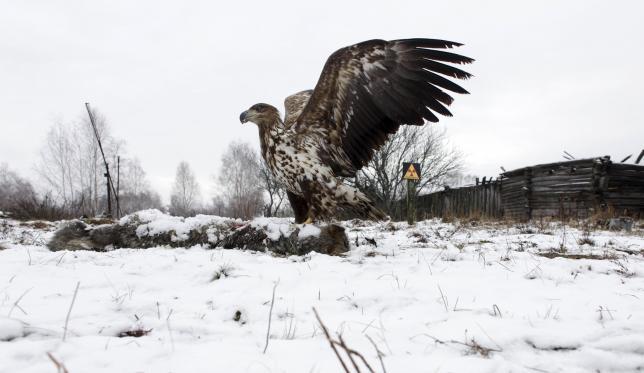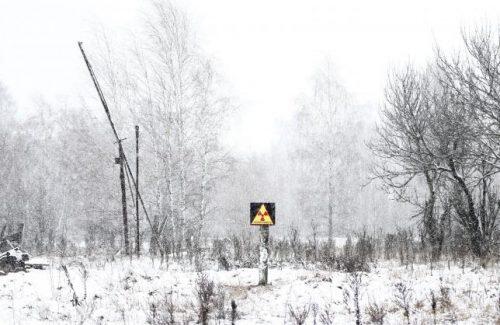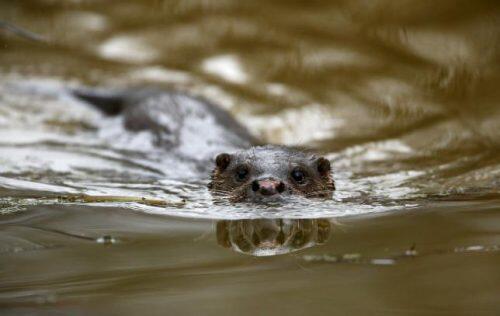The Chernobyl nuclear disaster which happened 30 years ago is still affecting the environment, humans, animals, plants, and everything around that “toxic” zone.
Let’s go back a little bit in time. Back to April 26, 1986, when a botched test at the nuclear plant in Ukraine, then a Soviet republic, sent clouds of smouldering radioactive material across large swathes of Europe.
An aerial view of the Chernobyl nuclear plant from 1986. Picture: AP Photo/Volodymyr Repik
Over 100,000 people had to abandon the area permanently, leaving native animals the sole occupants of a cross-border “exclusion zone” roughly the size of Luxembourg.
In the Belarussian part of the zone, tumble-down villages marked with yellow and red radiation warning signs have become hunting grounds for predators such as wolves and hawks. Birds, including tawny owls and magpies, nest in the roofs and chimneys of abandoned buildings.
Radiation Impact
However, the radiation impact is still being discussed among scientists, environmentalists, and even people who went through all this. Until today, Chernobyl disasters’ harm is still on.
A radiation sign is seen in the 30 km (19 miles) exclusion zone around the Chernobyl nuclear reactor in the abandoned village of Dronki, Belarus, February 11, 2016. REUTERS/Vasily Fedosenko
Despite the radiation, wolf numbers are over seven times higher in the Belarussian part of the zone compared with uncontaminated areas elsewhere, according to a study published in scientific journal Current Biology last October.
Some wolves have taken to straying outside the zone to steal calves from nearby farms, prompting hunters to set traps or shoot them as a deterrent.
Turning the Uninhabitable Zone into a Biosphere
International donors have funded the building of a 30,000 tonne “safe confinement” arch to prevent more deadly particles spewing from the stricken nuclear reactor’s site for the next 100 years. Nevertheless, nothing can be done to decontaminate trees and soil that suffered the worst of the nuclear fallout within a 30-km radius of the plant.
An otter swims in a river in the 30 km (19 miles) exclusion zone around the Chernobyl nuclear reactor in the abandoned village of Pogonnoe, Belarus, March 13, 2016. REUTERS/Vasily Fedosenko
In March, Vronska said authorities were considering turning the uninhabitable zone into a biosphere to protect and study its native animal populations in what would be the largest nature reserve in Europe. There are also plans to use parts of the area to store nuclear waste and for solar power.
Special government permits, usually valid for a few days, are required for anyone wishing to visit the exclusion zone from the Belarussian side. Roads going into the zone are guarded to prevent any unauthorised person entering.
While the rules of access are also strict on the Ukrainian side, small tour groups can visit sites within the zone, including the “ghost town” of Pripyat.
As previous researchers wrote, after discovering the ecological richness of the CEZ, “Radioactivity at the level associated with the Chernobyl meltdown does have discernible, negative impacts on plant and animal life. However, the benefit of excluding humans from this highly contaminated ecosystem appears to outweigh significantly any negative cost associated with Chernobyl radiation.”
“When humans are removed, nature flourishes – even in the wake of the world’s worst nuclear accident,” said Jim Smith, an environmental scientist at the University of Portsmouth in England, in an October interview with The Christian Science Monitor, following the release of another study pointing to the natural resurgence in the abandoned area.














